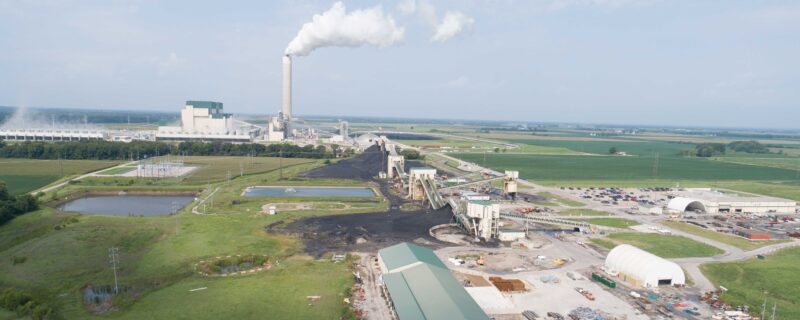
As Illinois strides toward a clean energy future, a significant gap threatens to hold us back: The continued reliance of rural electric cooperatives and municipal electric utilities on the Prairie State Coal Plant.
This massive facility, one of the largest coal polluters in the nation, powers thousands of homes across the Midwest, but at a considerable cost to our environment and public health.
The Prairie State Coal Plant is a titan of pollution. Each year, it pumps out 12 million tons of CO2, contributing significantly to climate change. On top of that, it generates 20 million cubic yards of toxic coal ash waste — a hazardous byproduct that poses severe risks to both human health and the environment. It’s estimated that the plant contributes to 76 premature deaths each year.
These environmental concerns are staggering. The coal ash produced by Prairie State contains harmful heavy metals that can contaminate water supplies and wreak havoc on local ecosystems. Alarmingly, the plant has a history of non-compliance with federal environmental regulations, operating for more than a decade without a valid air permit and exceeding federal limits on mercury emissions.
Why Now is the Time to Pause
Many Illinois communities, including St. Charles, Naperville and Winnetka, are tied to Prairie State through a long-term power supply contract with the Illinois Municipal Electric Agency (IMEA). These contracts, signed in 2007, have locked municipalities into a costly and environmentally damaging energy source.
Now, even though the current IMEA contracts are not set to expire until 2035, communities like St. Charles are considering extending their agreements for another 20 years. The proposed extension, valued at over $800 million, would commit these towns to coal-fired power until 2055 — decades beyond when coal should be phased out entirely.
Here’s the critical point: St. Charles doesn’t need to make this decision now.
Cities have until 2030 to decide whether to extend its contract, aligning with industry standards and providing ample time to explore alternatives. Rushing into an extension would be a disservice to the community, particularly without conducting long-term energy planning (often called integrated resource planning) and seeking competitive bids from other power providers that could offer cleaner, cheaper energy.
A petition by St. Charles residents has already garnered more than 300 signatures.
Thankfully, the St. Charles city council has listened to their citizens’ request. This week, St. Charles announced: “No action is being taken on the contract at this time while City Council reviews the information and resident input provided. We will share meeting information when discussions resume, which is anticipated in Spring 2025.”
Technology and the energy landscape are evolving rapidly. By waiting, St. Charles could benefit from advancements in renewable energy, energy efficiency, and storage technologies that are becoming more affordable and accessible. Signing a contract now would lock the city into decades of pollution and financial liability, limiting opportunities to pivot to cleaner energy sources.
A Call to Action for St. Charles, Naperville and Beyond
The fate of the Prairie State Coal Plant isn’t just about one facility; it’s about the broader challenge of enabling a just and equitable clean energy transition for communities across Illinois. St. Charles, Naperville, Winnetka, and other municipalities have a responsibility to their residents to make informed decisions that consider both the environmental and financial impacts.
We urge these communities to slow down and thoroughly evaluate all available options before signing a new contract with IMEA. By taking the time to explore competitive bids and consider the full spectrum of environmental and financial consequences, cities can ensure a more sustainable and economically sound energy future.
In the coming months, Prairie Rivers Network will continue to work with communities across Illinois to raise awareness of these issues and advocate for a cleaner, healthier energy future.
The decisions made today will shape our energy landscape for decades to come — let’s make sure we’re choosing a path that benefits both our environment and our economy.







